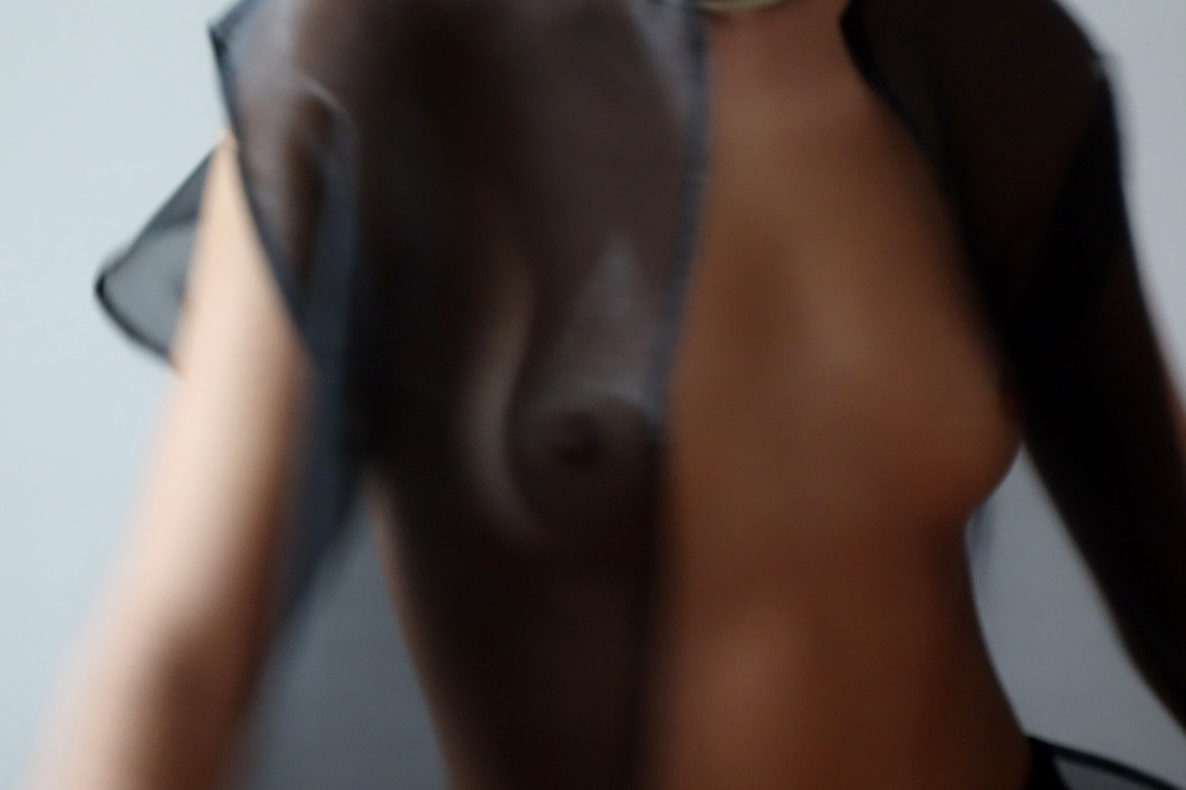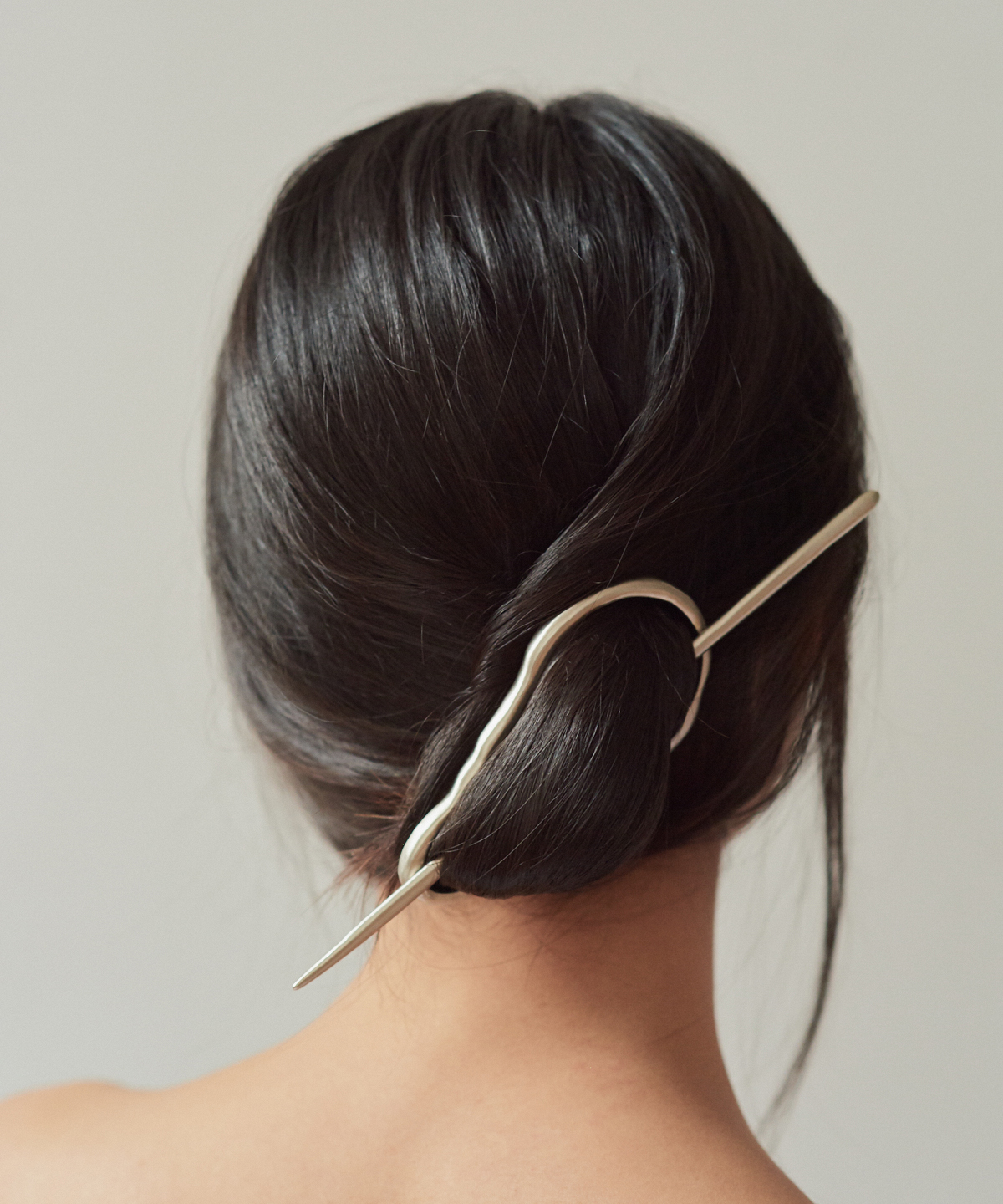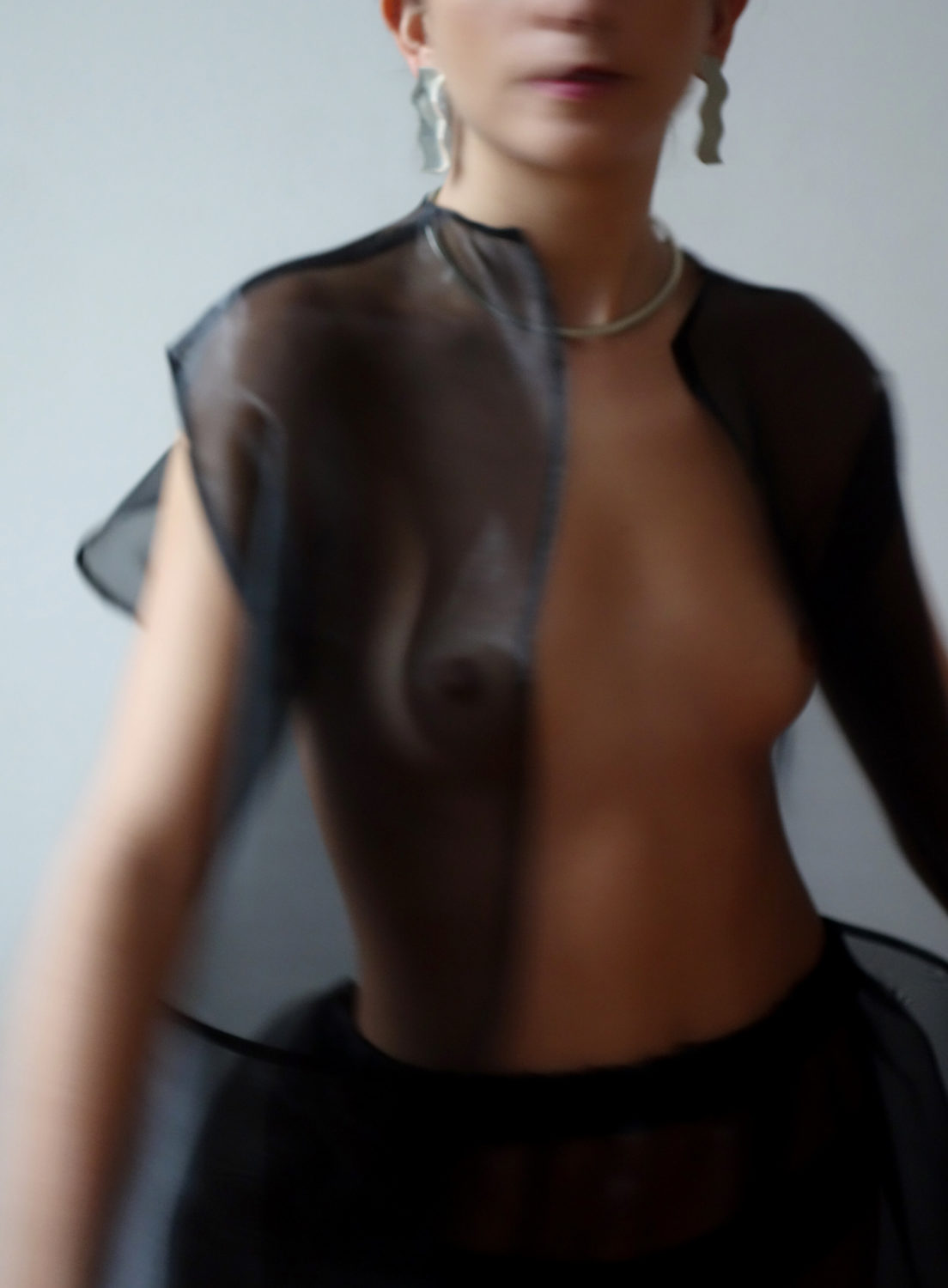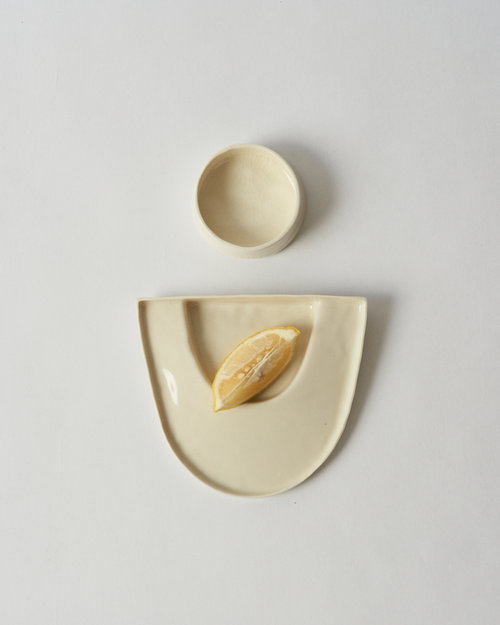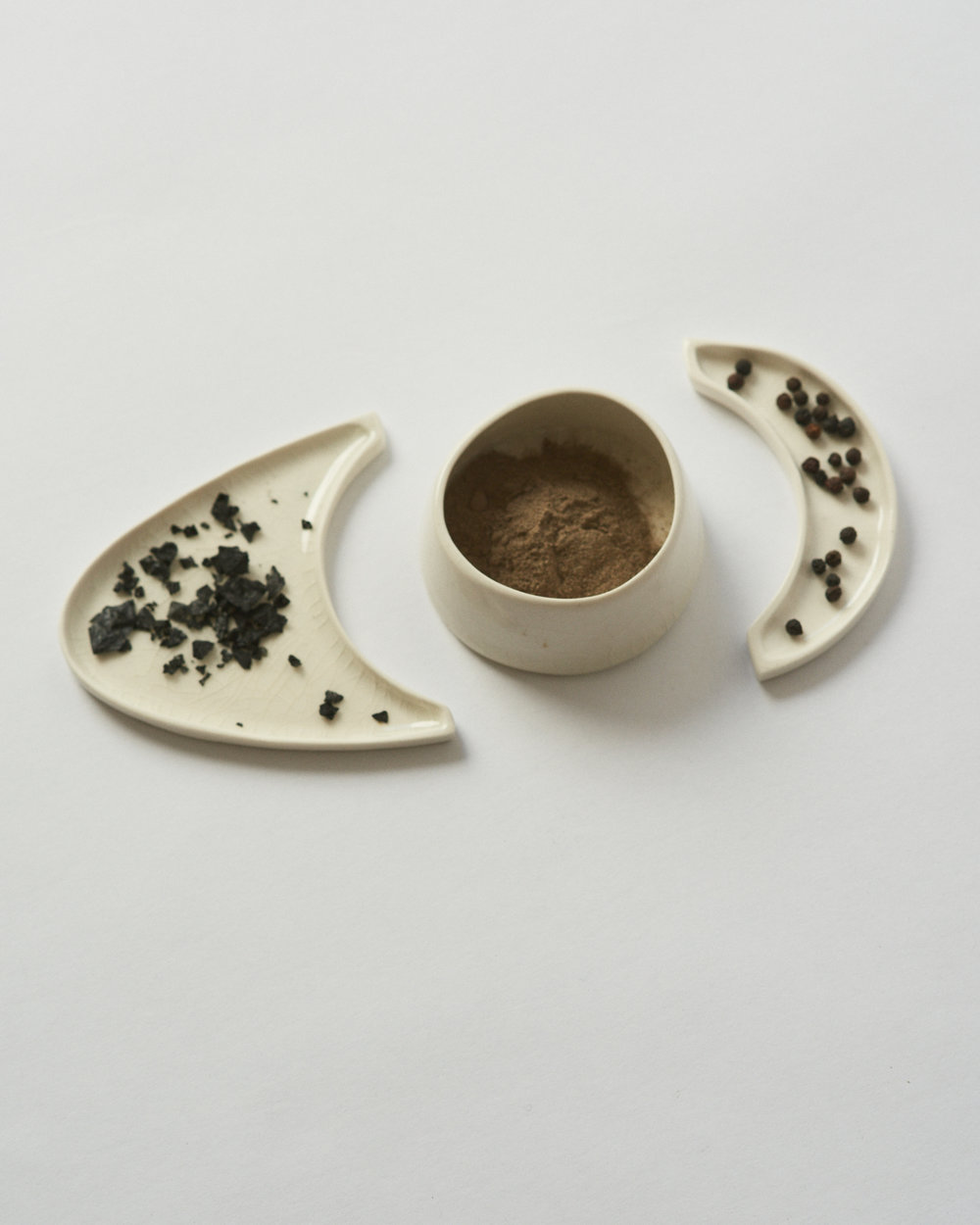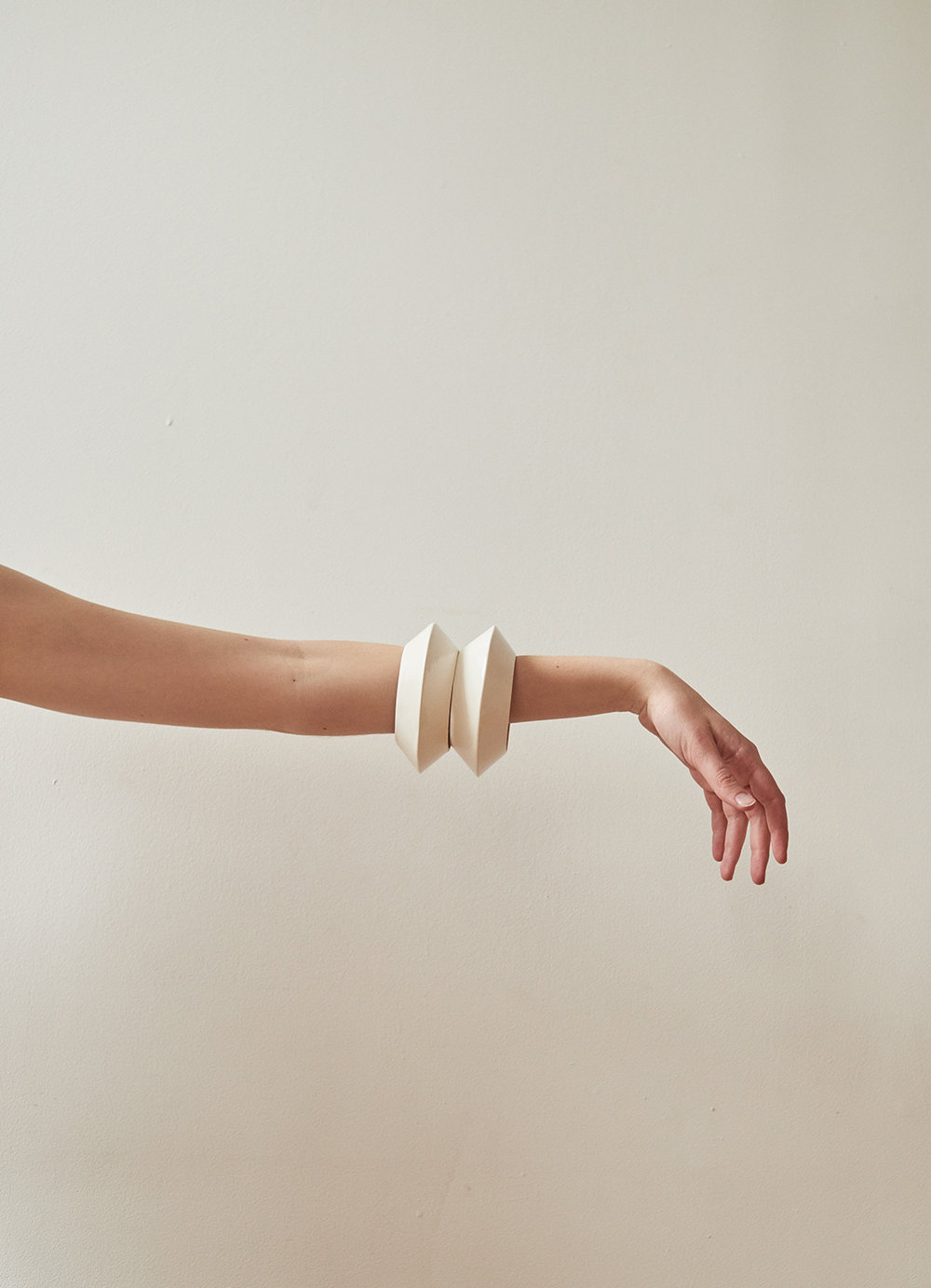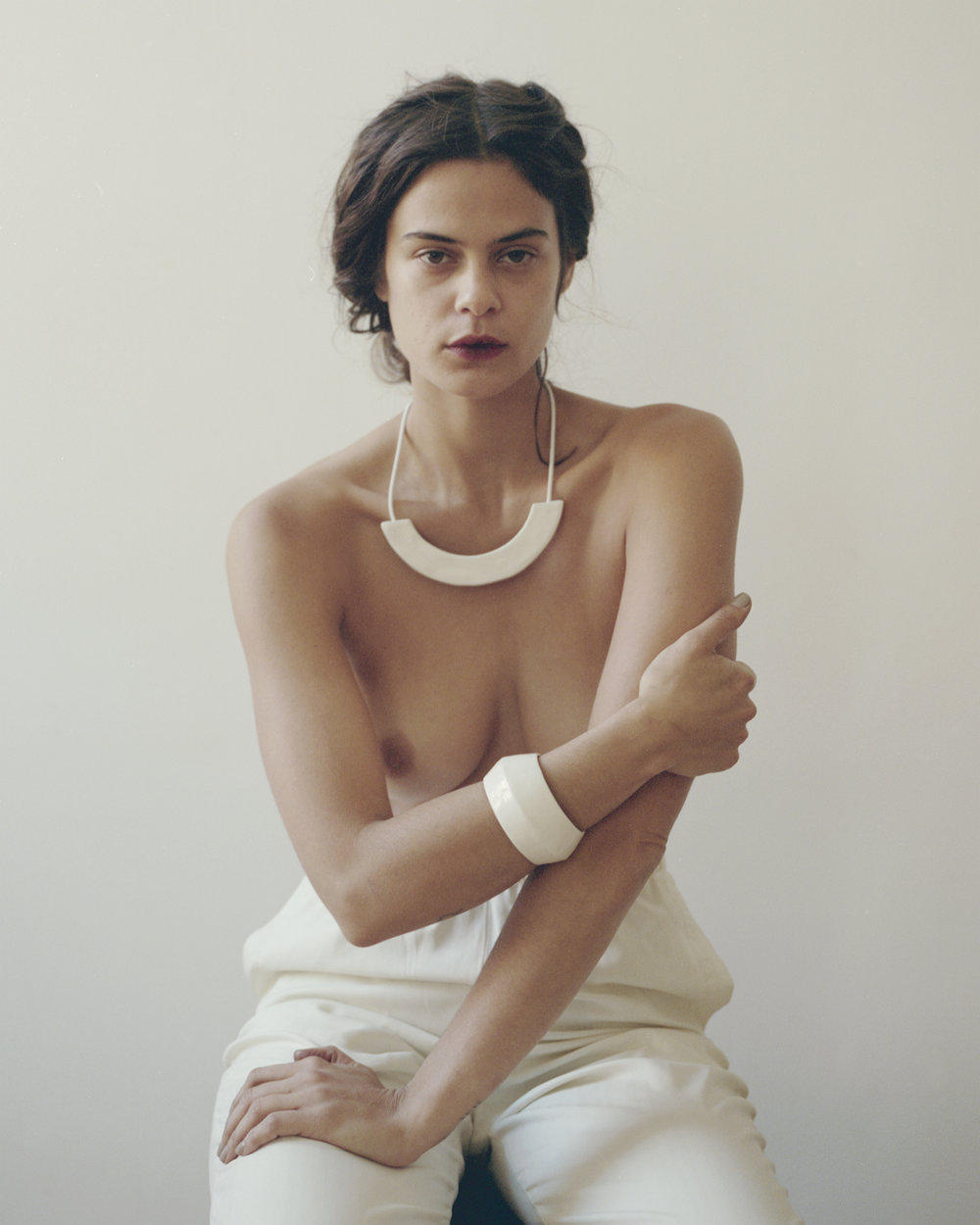Daniela Jacobs is the artist behind Arc Objects, a seasonless collection of wearable art and home objects. I chatted with her about her creative process, the fallacy of the ‘design mind,’ and the micro-joys of dreamy Mallorca.
Conversation has been edited for brevity. The best bits below.
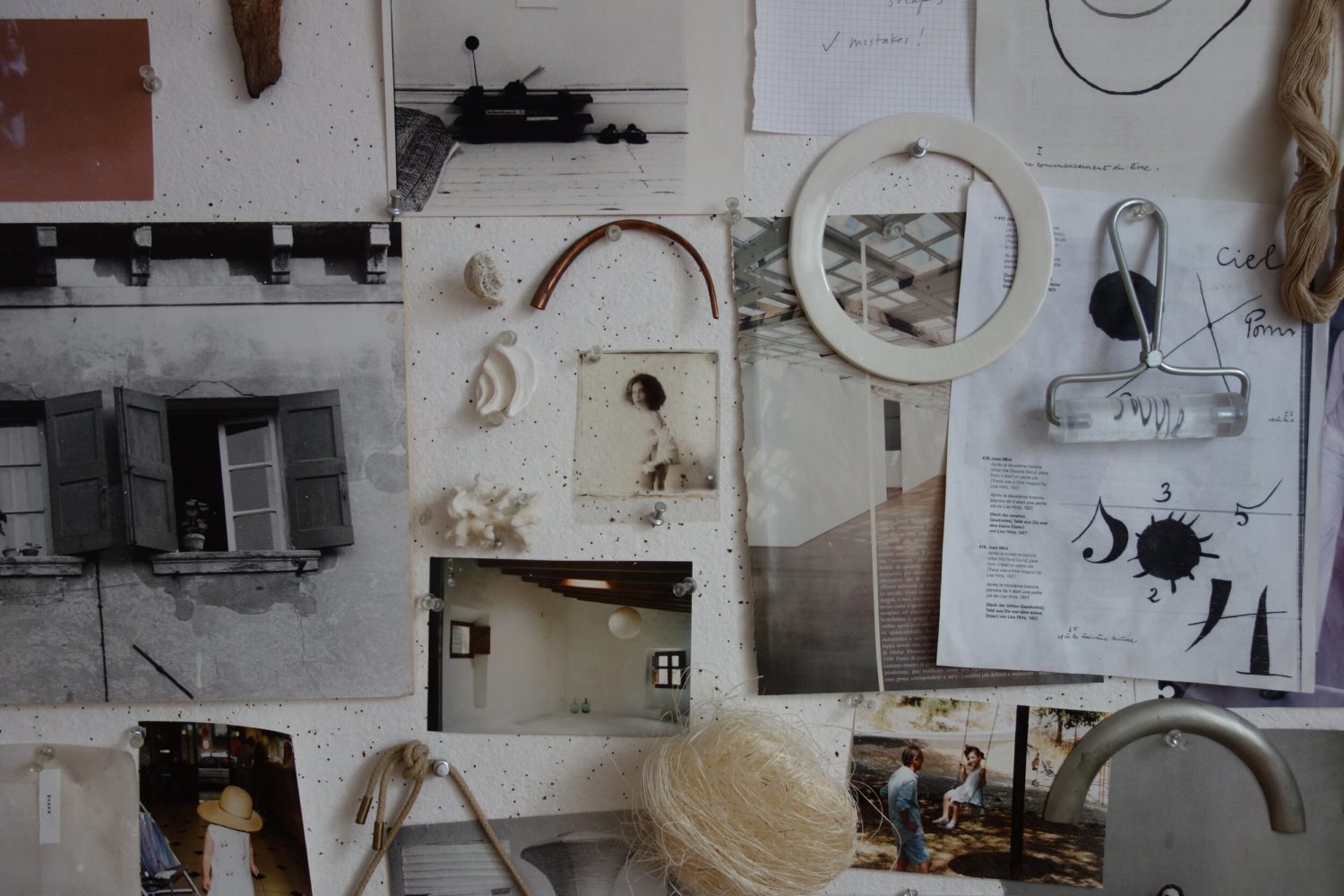
On Inspiration
If I’m feeling inspired then I just have a lot of ideas. And I’m usually inspired. So it’s normally like…what’s an idea that I want to sort of indulge right now? Oftentimes I’ll just think about the shape of some everyday object or thing, even like an idea, and think about if this were simplified or if this were amplified in some way; if some functional aspect of it were maybe exaggerated or somehow through the design made new or different…what would that look like? And then I’ll start sketching.
It’s even simpler than that, actually. Normally I’m just inspired by a shape or some action or ritual in my daily life. One of my first plate designs came about because I love olives. No huge surprise when you know I grew up in Mallorca, but I thought…well you have olives and then you end up with pits. So the crescent moon plates–that’s how they came about. Because it was just an idea like, you can put the pits there!
On Artistic Ability and the ‘Design Mind’
I don’t really agree with the concept of a design mind. I think everyone has that in them, and I think some people are more in touch with it than other people. A lot of people probably think they’re terrible at drawing but really they just have an idea that they’re forcing so much when they’re drawing that it’s not able to come through because of that frustration. But the best drawings I’ve ever done are when I’m like, fuck it I don’t even care what this looks like. Then your hand gets looser. The more you do it with that sort of idea in mind the better you get.
On Early Life
I’ve always been a creative person. I’m an only child and dinners and lunches in Mallorca with adults go on forever. I would be so happy if at a restaurant the table cloth was made of paper. Because all I needed was a pen and I was totally set. I would draw for hours, and I would make up stories about the people while I was drawing them. I used to think I was going to be an illustrator.
On Place and Home
One thing I have always loved about life in Mallorca is you’re so surrounded by nature. No matter where you are if you just look up you’re going to see mountains. When I’m there, I go to the sea every day, even if the water is too rough to swim. For me it’s like medicine. I love swimming. Anyone who knows me knows I really love swimming.
The natural beauty that’s there is so important, actually. I think that in New York we experience so many micro stresses everyday that we don’t even think about; air pollution, noise pollution, just the act of catching a train, waiting on a crowded subway platform. When you think back to an average day in New York City there’s a lot there that’s like actually kind of stressful and hard on the nervous system. Being surrounded by things like the mountains and the sea and the sky where you see stars at night…those are kind of the opposite. So opposed to micro-stresses it’s like micro-joys everyday. They really add up and I think they’re really meaningful.
There are so many things about Mediterranean culture that really speak to me. This idea that we should always be working, should always be productive, is so present in New York and is the sort of cultural mindset we have here. The drive of the city is super special, and part of that is in me too, but being okay to take a break and not move so quickly and be a little more connected to humanity I think is really important. I think more and more we’re starting to come around to that with Covid.
On Teaching at Parsons
It’s been kind of wonderful. It’s really felt like I have an opportunity to help my students get in touch with their creative spark and come up with a formula for their creative practice that is tailored to them and works with them–to try to make work that’s meaningful to them.
I think certain aesthetics fall in and out of favor, and that’s totally cool, but I think work that speaks to something honest within a person is inevitably going to be more impactful and ultimately add something more meaningful to the world.
A lot of what I bring up in class I try to think of as tools that will help a student reconnect with why they’re doing what they’re doing. They had to do what I call a river. It’s like a timeline, but you just include important parts of your journey that impacted your life in a way that led you to where you are now. Inevitably, through the process of doing that you make connections that you might take for granted normally.
[For example], I speak Mallorquin. But when I think about it, when I speak Mallorquin I’m more direct. The grammar structure and the language structure is such that you can’t really beat about the bush. You have to say what you mean. I’ve had so many epiphanies when I’m explaining something in Mallorquin because I [realize] oh my gosh that’s really how I feel when it comes down to it!
Thinking about language in this sort of unusual way has helped me to see how design is its own language. That concept has totally impacted my work; thinking about design as a form of communication.
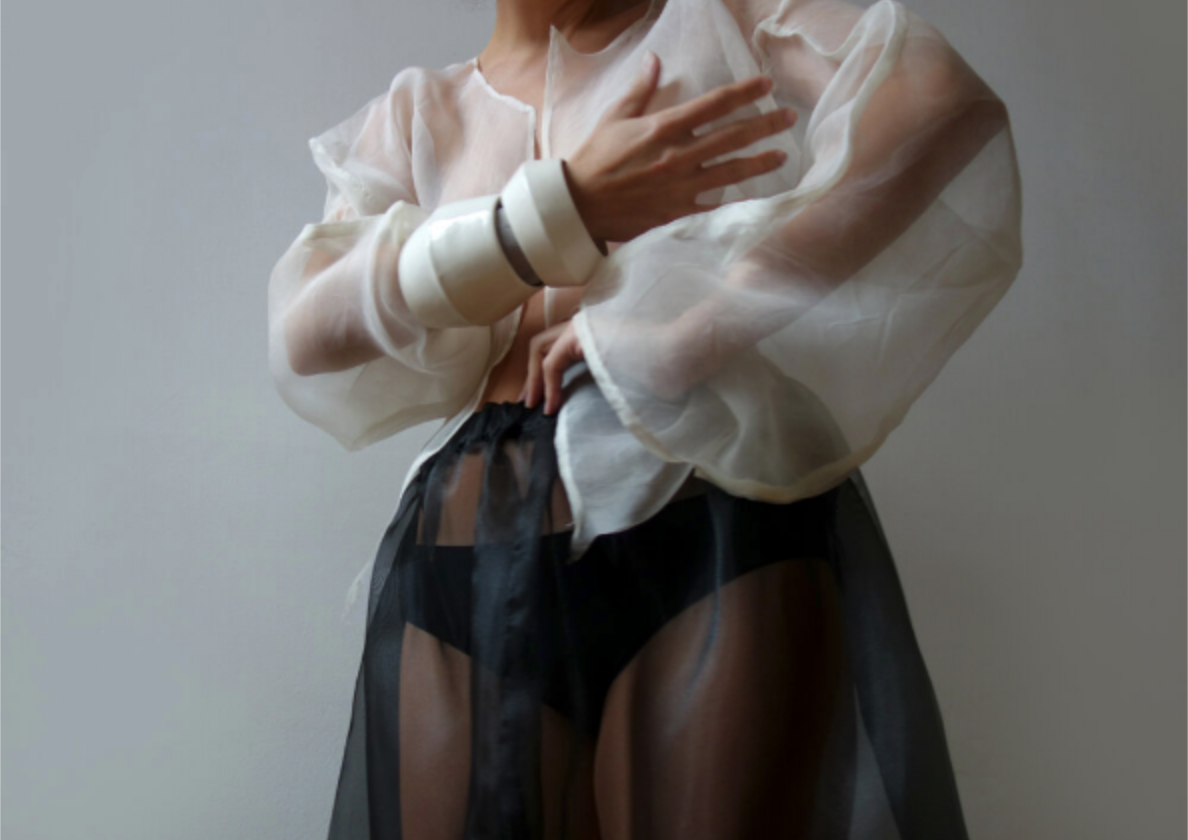
On Being Seasonless and Sustainability
The sustainability aspect has always been really important to me. My minor was focused on the ethics of consumption and production. It’s something that I’ve thought about for a really long time.
My dad was a bit older. He was in his 80s when I was growing up. He had a sort of Depression Era mentality, but not in a bad way. In a very, in my opinion, noble way. I’m a 90s baby, and excess and logos and all this conspicuous consumption was super trendy then. And he really wanted it to be instilled in my upbringing that that wasn’t actually something to strive for. You should use what you own and not own more than you need. Kind of the Marie Kondo thinking but he would never have said it that way. So I just grew up hearing about his ideas on things like that.
In middle school I taught myself to sew because I was disgusted when I learned more about the practices in the fashion industry. I had an interest in clothes and expressing myself through clothes, but at the same time I didn’t want to be contributing to an industry that seemed really toxic and kind of backwards. I couldn’t afford designer clothes, and I just fundamentally did not like the idea of buying fast fashion.
For me my work has to be seasonless.
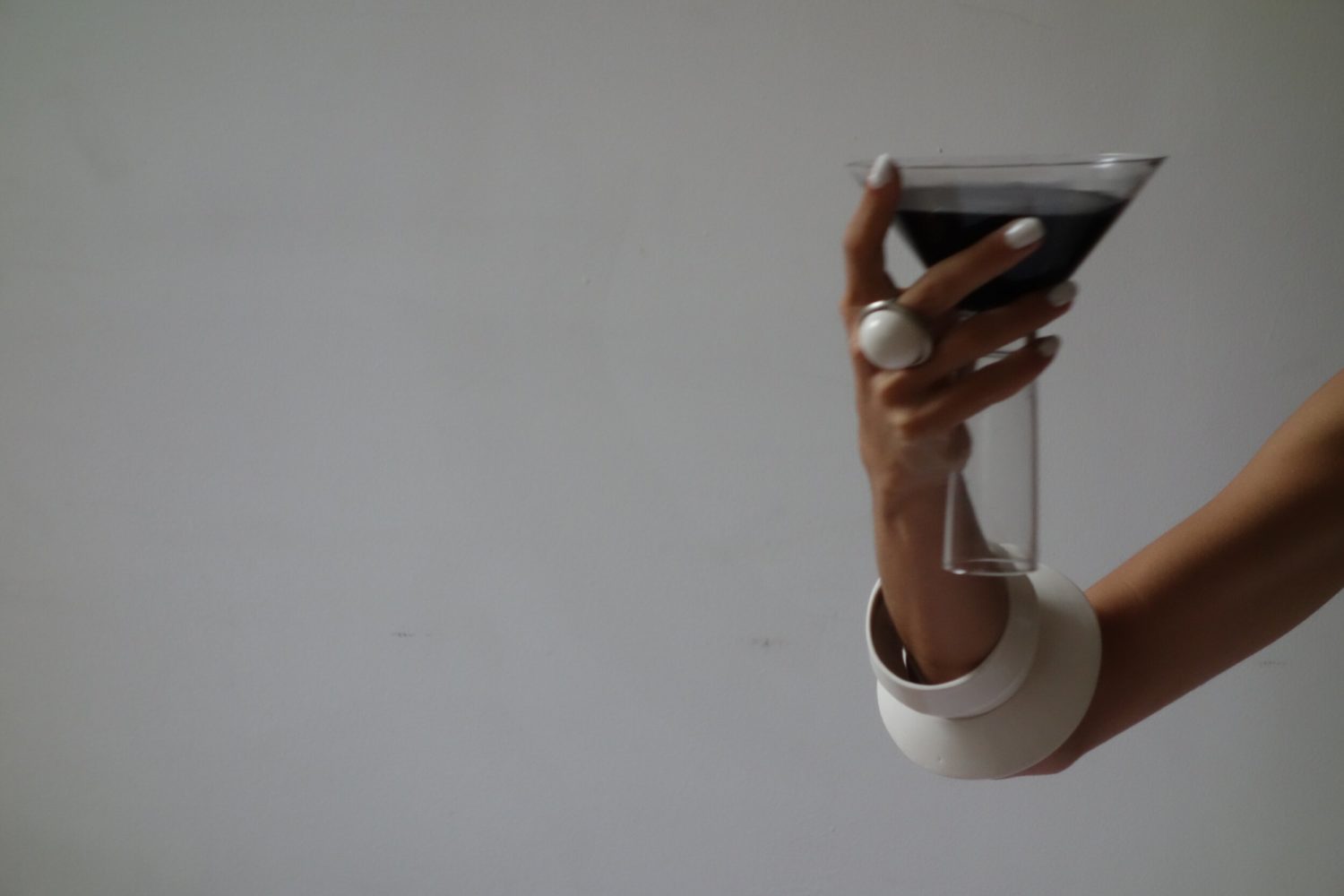
On Mindfulness
I think it has a lot to do with clearing away the excesses of life–trying to be conscious in the present moment and not think about what you have to do ten minutes from now, or tasks that are upcoming, or stuff that’s plaguing you that happened already in the past.
In a certain way it also has to do with letting go of set expectations. I think it’s definitely our human, post-industrialism frame of mind to always be thinking about moving forward, and growth, and charging ahead. I think mindfulness is kind of a process of stripping that away and being okay with quietness and stillness. That’s often uncomfortable because it’s not always peaceful when it’s quiet.
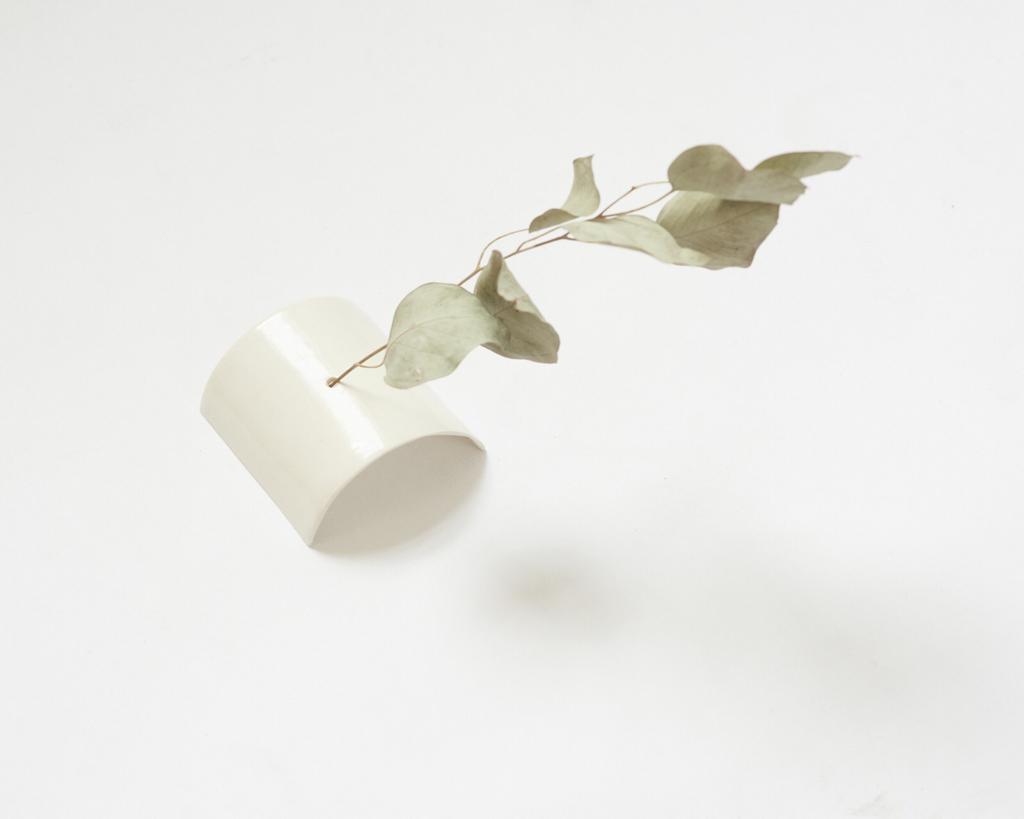
In our society we’re trained to think that certain modes of thinking, being, living and looking are correct and others are either incorrect at best or sinful at worst. We’re not even aware of all the things that we absorb by osmosis just by growing up in this culture. So that kind of discomfort with quietness and introspection is not that surprising in a way.
A percentage of every sale is donated to organizations that seek to empower, facilitate, and inspire actionable change and justice. The organizations rotate each month so that donations are going where they are most needed. Currently, proceeds are being donated to Gardens Not Guns.
